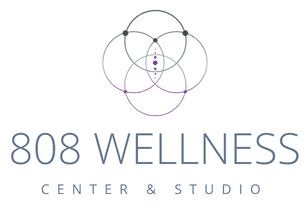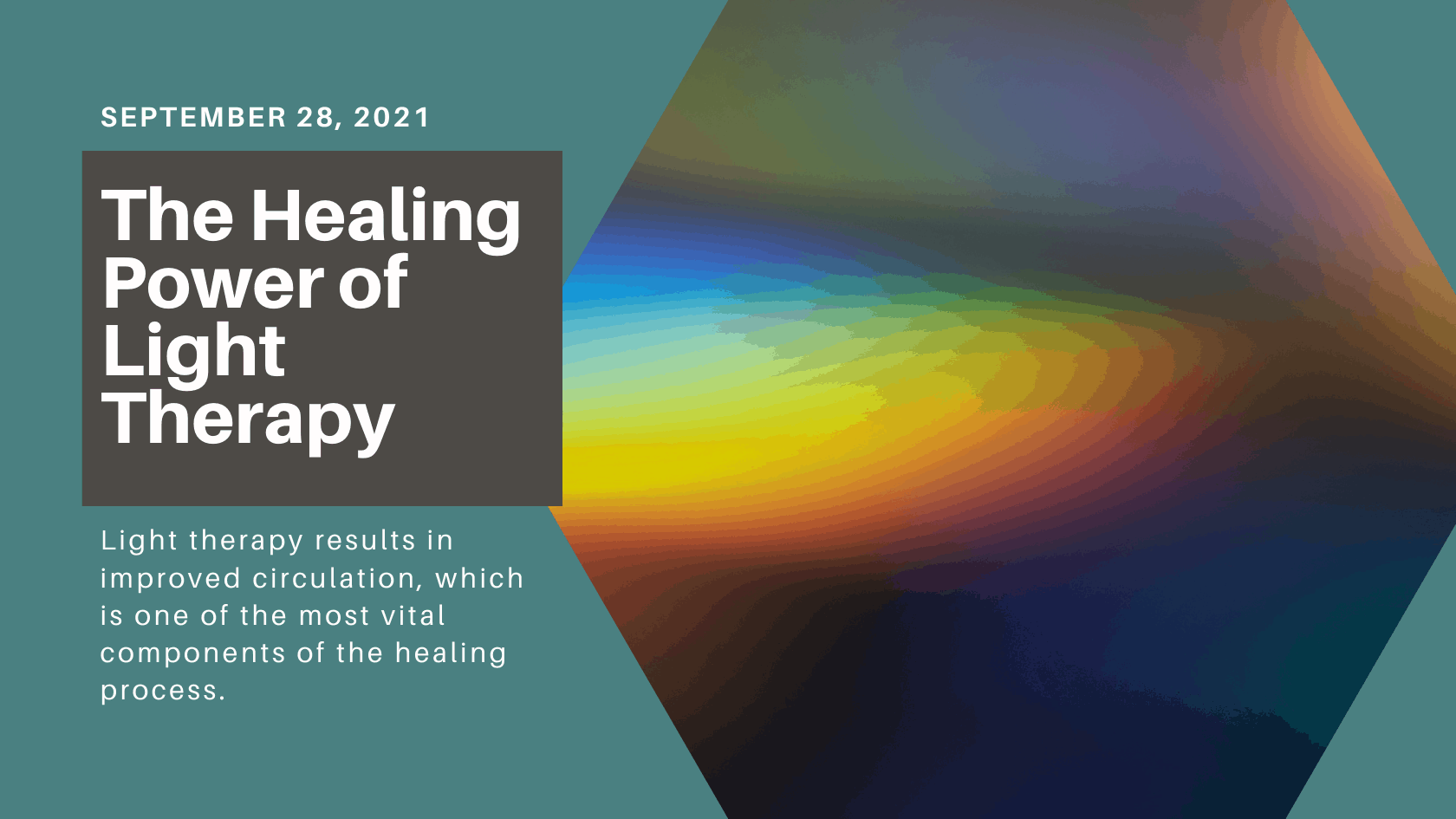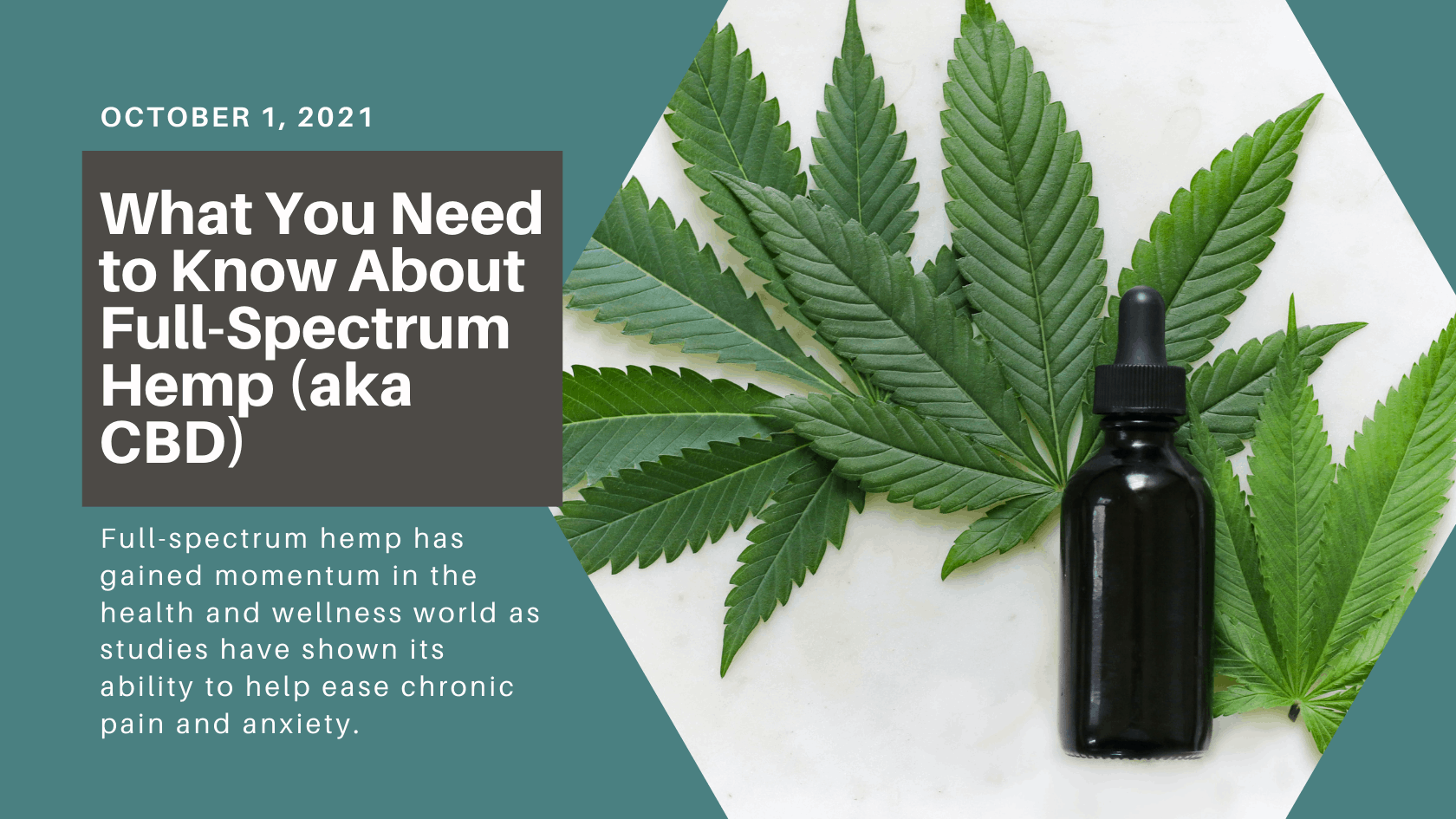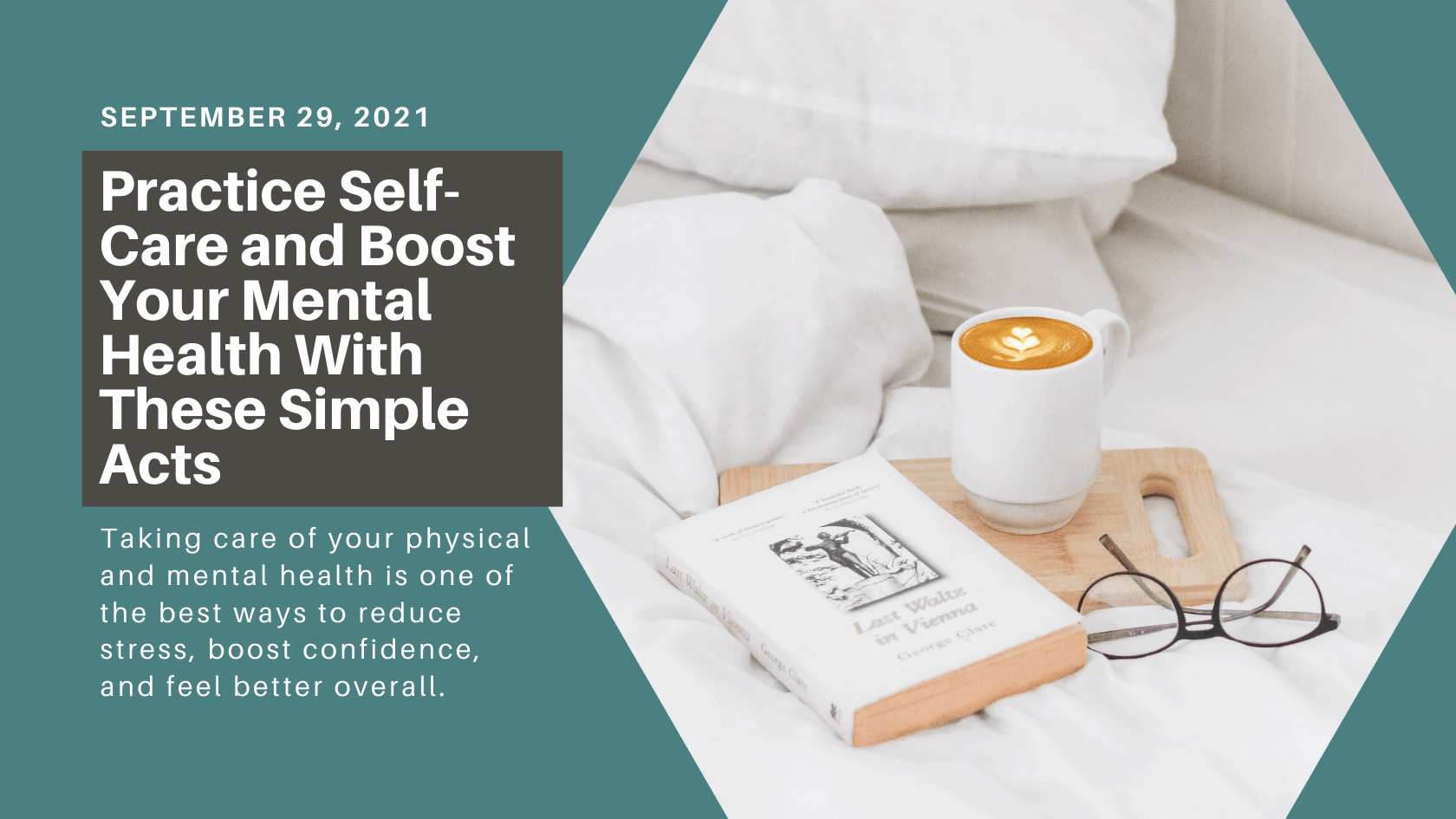Did you know light therapy has been used as a medical treatment as far back as 1895 when it was developed by Danish physician Niels Ryberg Finsen to treat lupus vulgaris, a type of tuberculosis? He even received a Nobel Prize of Medicine in 1903 for his innovation. While more modern versions of light therapy have been around since the 80s, and studies have shown its numerous benefits, many are still unaware of the power of light as a healing modality.
Benefits of Light Therapy
If you suffer from chronic pain or decreased circulation, you may experience beneficial results from the use of polychromatic light therapy (PLT). PLT pads are designed to target specific areas of concern, such as:
- Joint pain: neck, back, knuckles, elbow, knee, wrist
- Inflammation and swelling
- Stiffness
- Muscle spasms
- Bone fractures
- Bruises
- Burns
- Non-healing wounds
- Peripheral neuropathy
- Tight muscles
- Mood Disorders
- Skin conditions
What is polychromatic light therapy?
Polychromatic light therapy is the use of two or more wavelengths of colored light at the same time, which are provided by light-emitting diodes (LEDs). Researchers call the biological effects of PLT on the body photobiomodulation (PBM).
Photo = light
Bio = biology
Modulation = change
Light is composed of photons, which are quantum units of energy. Various wavelengths of light penetrate our tissue at different depths and are absorbed by the cells to assist in the production of ATP (adenosine triphosphate), which is the energy required for cells to repair and regenerate. Light near the blue end of the spectrum penetrates 2-3mm. Light near the red end of the spectrum penetrates 8-10mm. Near-infrared light penetrates 20-100mm, which is almost four inches.
But How Does It Actually Work?
To understand how light therapy works, we have to get a little bit technical. But to state it simply first, light—whether from the sun or from a device—is absorbed by the skin and catalyzes changes at the cellular level that stimulate healing. Our cells need light to optimally function, which means our bodies need light for optimal health.
Now to get to the technical part, when light is applied to the body, it stimulates the release of nitric oxide from hemoglobin into the bloodstream. Then when nitric oxide is released from hemoglobin, it enters the muscle cells and walls of the blood vessels. This triggers the muscle cells to relax and the blood vessels to dilate, which allows more blood to flow through.
Elevating nitric oxide levels in the body offers numerous benefits, such as anti-inflammation, tissue regeneration, pain reduction, increased oxygenation, and enhanced circulation when light therapy is applied to a particular site. Essentially, light therapy results in beneficial chemical reactions throughout damaged nerve cells that stimulate healing via increased blood flow. And improved circulation (i.e., blood flow) is one of the most vital components of the healing process.









This website, you can find a wide selection of casino slots from top providers.
Players can experience traditional machines as well as modern video slots with high-quality visuals and exciting features.
If you’re just starting out or a seasoned gamer, there’s a game that fits your style.
play casino
The games are instantly accessible 24/7 and compatible with laptops and tablets alike.
All games run in your browser, so you can start playing instantly.
Platform layout is intuitive, making it simple to explore new games.
Sign up today, and enjoy the world of online slots!
On this platform, you can find a wide selection of casino slots from leading developers.
Visitors can try out classic slots as well as new-generation slots with vivid animation and bonus rounds.
If you’re just starting out or an experienced player, there’s something for everyone.
slot casino
Each title are available anytime and designed for desktop computers and mobile devices alike.
You don’t need to install anything, so you can start playing instantly.
Platform layout is user-friendly, making it simple to explore new games.
Sign up today, and dive into the excitement of spinning reels!
Покупка туристического полиса во время путешествия — это разумное решение для финансовой защиты туриста.
Страховка гарантирует неотложную помощь в случае несчастного случая за границей.
Также, страховка может включать компенсацию на возвращение домой.
мед страховка для выезда за рубеж
Некоторые государства предусматривают предоставление документа для получения визы.
Без страховки медицинские расходы могут быть финансово обременительными.
Получение сертификата заранее
Наша платформа — подтверждённый интернет-бутик Bottega Венета с отправкой по стране.
В нашем магазине вы можете купить брендовые изделия Bottega Veneta напрямую.
Все товары подтверждены сертификатами от марки.
bottega-official.ru
Доставка осуществляется быстро в по всей территории России.
Бутик онлайн предлагает выгодные условия покупки и гарантию возврата средств.
Выбирайте официальном сайте Bottega Veneta, чтобы чувствовать уверенность в покупке!
在这个网站上,您可以联系专门从事特定的危险工作的人员。
我们提供大量经验丰富的从业人员供您选择。
无论需要何种复杂情况,您都可以快速找到理想的帮手。
chinese-hitman-assassin.com
所有作业人员均经过审核,保证您的机密信息。
网站注重效率,让您的危险事项更加无忧。
如果您需要更多信息,请与我们取得联系!
This website, you can discover lots of casino slots from top providers.
Visitors can experience classic slots as well as modern video slots with vivid animation and bonus rounds.
Even if you’re new or a seasoned gamer, there’s always a slot to match your mood.
money casino
All slot machines are available round the clock and designed for PCs and tablets alike.
All games run in your browser, so you can get started without hassle.
Site navigation is user-friendly, making it simple to explore new games.
Join the fun, and enjoy the thrill of casino games!
Here, you can browse different websites for CS:GO betting.
We have collected a selection of gaming platforms dedicated to Counter-Strike: Global Offensive.
These betting options is handpicked to secure reliability.
cs go gambling
Whether you’re new to betting, you’ll conveniently select a platform that fits your style.
Our goal is to assist you to enjoy proven CS:GO wagering platforms.
Explore our list right away and boost your CS:GO gaming experience!
Questa pagina rende possibile la selezione di operatori per attività a rischio.
I clienti possono trovare professionisti specializzati per operazioni isolate.
Gli operatori proposti sono selezionati con attenzione.
sonsofanarchy-italia.com
Con il nostro aiuto è possibile visualizzare profili prima della scelta.
La sicurezza resta la nostra priorità.
Iniziate la ricerca oggi stesso per trovare il supporto necessario!
La nostra piattaforma offre la selezione di persone per compiti delicati.
Gli utenti possono trovare operatori competenti per lavori una tantum.
Le persone disponibili sono valutati secondo criteri di sicurezza.
assumere un killer
Con il nostro aiuto è possibile visualizzare profili prima di procedere.
La qualità rimane al centro del nostro servizio.
Iniziate la ricerca oggi stesso per affrontare ogni sfida in sicurezza!
Looking to connect with reliable contractors available to tackle temporary risky projects.
Require someone for a high-risk assignment? Connect with certified experts here for critical dangerous operations.
rent a hitman
Our platform connects employers to trained workers prepared to take on hazardous one-off gigs.
Hire pre-screened contractors to perform risky tasks securely. Ideal when you need urgent scenarios demanding safety-focused expertise.
在这个网站上,您可以联系专门从事特定的高危工作的人员。
我们提供大量技能娴熟的任务执行者供您选择。
无论面对何种危险需求,您都可以轻松找到合适的人选。
雇佣一名杀手
所有任务完成者均经过审核,保证您的机密信息。
服务中心注重专业性,让您的个别项目更加顺利。
如果您需要具体流程,请随时咨询!
On this platform, you can discover a great variety of slot machines from leading developers.
Visitors can enjoy traditional machines as well as new-generation slots with high-quality visuals and interactive gameplay.
Whether you’re a beginner or a casino enthusiast, there’s a game that fits your style.
slot casino
The games are ready to play 24/7 and optimized for laptops and smartphones alike.
No download is required, so you can start playing instantly.
The interface is intuitive, making it quick to browse the collection.
Join the fun, and enjoy the thrill of casino games!
Humans consider ending their life due to many factors, often arising from deep emotional pain.
The belief that things won’t improve might overpower their desire to continue. In many cases, loneliness plays a significant role in pushing someone toward such thoughts.
Mental health issues can cloud judgment, making it hard for individuals to see alternatives beyond their current state.
how to commit suicide
External pressures could lead a person toward this extreme step.
Lack of access to help might result in a sense of no escape. Keep in mind that reaching out can save lives.
On the resource useful materials about ways of becoming a security expert.
Knowledge is imparted in a straightforward and coherent manner.
It helps master a range of skills for breaking through security.
Moreover, there are concrete instances that show how to execute these expertise.
how to become a hacker
The entire content is often renewed to stay current with the up-to-date progress in computer security.
Special attention is concentrated on operational employment of the obtained information.
Keep in mind that each activity should be employed legitimately and with moral considerations only.
This resource you can find unique bonus codes for online betting.
Such codes make it possible to acquire supplementary bonuses when playing on the website.
All available promo deals are constantly refreshed to confirm their effectiveness.
When using these promotions it is possible to improve your potential winnings on the online service.
https://todaytimeslive.com/pages/ochistitely_vozduha_smog_v_kvartire_bolyshe_ne_problema.html
Moreover, complete guidelines on how to apply discounts are included for better understanding.
Consider that particular bonuses may have limited validity, so verify details before redeeming.
One X Bet is a premier online betting platform.
Featuring a broad variety of matches, 1XBet meets the needs of a vast audience around the world.
The 1xBet application crafted intended for Android devices and iPhone players.
https://distk.fr/wp-content/pgs/naselenie_tanzanii_v_afrike_12.html
It’s possible to download the 1xBet app through the platform’s page and also Play Store for Android users.
For iOS users, the application is available through the App Store easily.
One X Bet Bonus Code – Special Bonus as much as $130
Use the 1xBet bonus code: 1xbro200 while signing up via the application to avail special perks provided by One X Bet to receive 130 Euros maximum of a full hundred percent, for placing bets along with a $1950 featuring one hundred fifty free spins. Start the app and proceed by completing the registration procedure.
This 1xBet promotional code: Code 1XBRO200 offers an amazing starter bonus for first-time users — a complete hundred percent maximum of €130 upon registration. Promo codes are the key to obtaining bonuses, also 1XBet’s bonus codes aren’t different. After entering this code, players have the chance of several promotions at different stages of their betting experience. Although you don’t qualify to the starter reward, One X Bet India makes sure its regular customers are rewarded via ongoing deals. Look at the Deals tab via their platform often to stay updated regarding recent promotions tailored for existing players.
1xbet promo code india
What 1xBet bonus code is presently available at this moment?
The bonus code relevant to One X Bet stands as Code 1XBRO200, which allows novice players registering with the bookmaker to gain a bonus of 130 dollars. In order to unlock special rewards related to games and wagering, please input the promotional code concerning 1XBET while filling out the form. To take advantage of this offer, potential customers should enter the bonus code Code 1xbet while signing up step for getting double their deposit amount for their first payment.
One X Bet Bonus Code – Special Bonus up to $130
Enter the One X Bet bonus code: Code 1XBRO200 during sign-up via the application to unlock special perks offered by 1XBet to receive $130 up to 100%, for wagering along with a 1950 Euros with free spin package. Start the app followed by proceeding by completing the registration process.
The One X Bet promo code: 1XBRO200 gives an amazing sign-up bonus to new players — 100% up to 130 Euros upon registration. Bonus codes act as the key for accessing extra benefits, also One X Bet’s bonus codes aren’t different. When applying such a code, users can take advantage from multiple deals in various phases of their betting experience. Although you don’t qualify to the starter reward, 1XBet India guarantees its devoted players receive gifts through regular bonuses. Visit the Offers page on their website often to remain aware about current deals meant for loyal customers.
https://fashion.clinicalkeynote.com/the-trump-world-wide-web-plan-toll-in-2021-3806306521746755161
What 1XBet promo code is currently active right now?
The promo code applicable to One X Bet stands as 1XBRO200, which allows new customers signing up with the gambling provider to gain a reward amounting to $130. To access unique offers related to games and bet placement, kindly enter this special code for 1XBET while filling out the form. To make use of this offer, prospective users need to type the promotional code Code 1xbet during the registration step so they can obtain a 100% bonus applied to the opening contribution.
На этом сайте вы можете найти последние коды Melbet-промо.
Примените коды при регистрации на платформе и получите максимальную награду за первое пополнение.
Плюс ко всему, здесь представлены бонусы по активным предложениям и постоянных игроков.
мелбет промокод без депозита
Обновляйте информацию в рубрике акций, не пропустив эксклюзивные бонусы в рамках сервиса.
Все промокоды тестируется на работоспособность, поэтому вы можете быть уверены при использовании.
1xBet Promotional Code – Special Bonus up to 130 Euros
Use the One X Bet promo code: 1XBRO200 while signing up on the app to unlock the benefits offered by 1xBet and get welcome bonus up to 100%, for sports betting plus a 1950 Euros including one hundred fifty free spins. Open the app followed by proceeding with the registration steps.
This 1XBet bonus code: 1XBRO200 offers a great starter bonus for first-time users — 100% as much as 130 Euros during sign-up. Promo codes are the key to obtaining rewards, and 1XBet’s promo codes are the same. By using this code, bettors may benefit from multiple deals in various phases within their betting activity. Although you’re not eligible for the welcome bonus, 1xBet India guarantees its devoted players are rewarded with frequent promotions. Visit the Offers page via their platform frequently to stay updated on the latest offers designed for existing players.
1xbet promo code ethiopia
Which 1XBet promotional code is presently available right now?
The bonus code relevant to 1xBet is 1XBRO200, enabling first-time users joining the bookmaker to access an offer amounting to $130. For gaining special rewards related to games and wagering, make sure to type this special code for 1XBET during the sign-up process. To make use of this offer, potential customers should enter the bonus code Code 1xbet during the registration step to receive a full hundred percent extra applied to the opening contribution.
Here, find a variety virtual gambling platforms.
Searching for well-known titles latest releases, you’ll find an option for any taste.
Every casino included are verified for trustworthiness, so you can play with confidence.
1xbet
Moreover, the site unique promotions and deals to welcome beginners and loyal customers.
With easy navigation, finding your favorite casino takes just moments, saving you time.
Keep informed about the latest additions through regular check-ins, since new casinos are added regularly.
This website, you can discover lots of casino slots from top providers.
Players can experience classic slots as well as new-generation slots with stunning graphics and exciting features.
Whether you’re a beginner or an experienced player, there’s something for everyone.
casino
The games are instantly accessible round the clock and optimized for PCs and tablets alike.
All games run in your browser, so you can get started without hassle.
Site navigation is intuitive, making it quick to explore new games.
Register now, and dive into the thrill of casino games!
This website, you can access a great variety of online slots from top providers.
Visitors can try out retro-style games as well as new-generation slots with stunning graphics and interactive gameplay.
Even if you’re new or a casino enthusiast, there’s always a slot to match your mood.
casino slots
All slot machines are instantly accessible round the clock and compatible with PCs and smartphones alike.
No download is required, so you can jump into the action right away.
Site navigation is intuitive, making it quick to explore new games.
Sign up today, and dive into the excitement of spinning reels!
Traditional mechanical watches are the epitome of timeless elegance.
In a world full of digital gadgets, they consistently hold their style.
Built with precision and expertise, these timepieces reflect true horological mastery.
Unlike fleeting trends, manual watches will never go out of fashion.
https://t.me/s/watchloverclub/5
They stand for heritage, legacy, and enduring quality.
Whether used daily or saved for special occasions, they always remain in style.
This website, you can access a wide selection of slot machines from leading developers.
Visitors can enjoy traditional machines as well as feature-packed games with vivid animation and exciting features.
Whether you’re a beginner or a casino enthusiast, there’s something for everyone.
casino
Each title are ready to play round the clock and designed for PCs and tablets alike.
No download is required, so you can get started without hassle.
The interface is user-friendly, making it convenient to browse the collection.
Sign up today, and dive into the thrill of casino games!
Today
individuals prefer
digital purchases. Be it food
to furniture, almost every good
may be purchased from home.
Such convenience redefined
retail experiences.
https://www.finnishsportsagency.com/read-blog/3527
Within this platform, explore a wide range of online casinos.
Interested in classic games new slot machines, there’s a choice for every player.
Every casino included fully reviewed for safety, so you can play with confidence.
pin-up
Moreover, the platform unique promotions and deals to welcome beginners as well as regulars.
With easy navigation, locating a preferred platform takes just moments, making it convenient.
Keep informed about the latest additions by visiting frequently, since new casinos appear consistently.
Here, explore a variety internet-based casino sites.
Interested in classic games or modern slots, there’s something for every player.
All featured casinos fully reviewed for trustworthiness, allowing users to gamble with confidence.
1xbet
Additionally, the platform unique promotions plus incentives targeted at first-timers as well as regulars.
Due to simple access, locating a preferred platform is quick and effortless, saving you time.
Keep informed on recent updates with frequent visits, as fresh options come on board often.
Here, you can find a great variety of casino slots from leading developers.
Users can try out retro-style games as well as new-generation slots with stunning graphics and interactive gameplay.
If you’re just starting out or a casino enthusiast, there’s something for everyone.
money casino
The games are available 24/7 and compatible with PCs and mobile devices alike.
All games run in your browser, so you can jump into the action right away.
Platform layout is intuitive, making it convenient to browse the collection.
Join the fun, and dive into the world of online slots!
这个网站 提供 海量的 成人内容,满足 不同用户 的 喜好。
无论您喜欢 什么样的 的 内容,这里都 种类齐全。
所有 资源 都经过 精心筛选,确保 高品质 的 浏览感受。
喷出
我们支持 不同平台 访问,包括 平板,随时随地 尽情观看。
加入我们,探索 激情时刻 的 私密乐趣。
On this site, find a variety of online casinos.
Searching for well-known titles latest releases, you’ll find an option for every player.
The listed platforms are verified for trustworthiness, allowing users to gamble peace of mind.
1xbet
Moreover, this resource unique promotions along with offers to welcome beginners and loyal customers.
Thanks to user-friendly browsing, discovering a suitable site takes just moments, making it convenient.
Stay updated about the latest additions through regular check-ins, since new casinos are added regularly.
On this site, explore an extensive selection internet-based casino sites.
Interested in well-known titles or modern slots, there’s a choice to suit all preferences.
The listed platforms fully reviewed for safety, enabling gamers to bet peace of mind.
vavada
Moreover, this resource offers exclusive bonuses plus incentives to welcome beginners as well as regulars.
Due to simple access, locating a preferred platform happens in no time, making it convenient.
Be in the know about the latest additions by visiting frequently, because updated platforms are added regularly.
У нас вы можете найти подготовительные ресурсы для школьников.
Предоставляем материалы по всем основным предметам включая естественные науки.
Готовьтесь к ЕГЭ и ОГЭ с использованием пробных вариантов.
https://mybiysk.ru/life/gotovye-domashnie-zadaniya-polza-ili-vred-450013
Демонстрационные варианты упростят процесс обучения.
Регистрация не требуется для максимальной доступности.
Используйте ресурсы дома и успешно сдавайте экзамены.
На этом сайте вы найдете вспомогательные материалы для учеников.
Все школьные дисциплины в одном месте от математики до литературы.
Подготовьтесь к экзаменам с помощью тренажеров.
https://studentopedia.ru/uchebniki-po-matematiki.html
Примеры решений упростят процесс обучения.
Все материалы бесплатны для удобства обучения.
Используйте ресурсы дома и повышайте успеваемость.
У нас вы можете найти подготовительные ресурсы для учеников.
Предоставляем материалы по всем основным предметам включая естественные науки.
Готовьтесь к ЕГЭ и ОГЭ благодаря интерактивным заданиям.
https://englishmore.ru/others/kulturnye-aspekty-v-uchebnikah-spotlight
Примеры решений помогут разобраться с темой.
Все материалы бесплатны для удобства обучения.
Используйте ресурсы дома и повышайте успеваемость.
Здесь доступен сервис “Глаз Бога”, который собрать всю информацию о гражданине из открытых источников.
Инструмент работает по ФИО, используя актуальные базы онлайн. Благодаря ему осуществляется бесплатный поиск и детальный анализ по имени.
Инструмент проверен согласно последним данным и поддерживает аудио-материалы. Глаз Бога поможет найти профили по госреестрам и отобразит сведения мгновенно.
бот Глаз Бога
Данный бот — помощник для проверки граждан удаленно.
Здесь вы найдете Telegram-бот “Глаз Бога”, который найти всю информацию по человеку по публичным данным.
Сервис активно ищет по ФИО, анализируя доступные данные в сети. Благодаря ему осуществляется бесплатный поиск и полный отчет по имени.
Платформа обновлен на август 2024 и включает аудио-материалы. Глаз Бога сможет найти профили в открытых базах и покажет сведения мгновенно.
бот Глаз Бога
Это инструмент — помощник в анализе граждан удаленно.
На данном сайте вы можете отыскать боту “Глаз Бога” , который может собрать всю информацию о любом человеке из общедоступных баз .
Этот мощный инструмент осуществляет проверку ФИО и показывает информацию из государственных реестров .
С его помощью можно проверить личность через специализированную платформу, используя автомобильный номер в качестве поискового запроса .
сервис проверки телефона
Технология “Глаз Бога” автоматически собирает информацию из множества источников , формируя подробный отчет .
Пользователи бота получают пробный доступ для проверки эффективности.
Платформа постоянно совершенствуется , сохраняя актуальность данных в соответствии с законодательством РФ.
Здесь вы можете найти актуальными новостями страны и зарубежья .
Информация поступает в режиме реального времени .
Освещаются видеохроники с ключевых точек.
Экспертные комментарии помогут понять контекст .
Информация открыта без регистрации .
https://worldsfashion.ru
Looking for exclusive 1xBet promo codes? Our platform offers working promotional offers like 1x_12121 for registrations in 2024. Claim up to 32,500 RUB as a first deposit reward.
Activate trusted promo codes during registration to boost your bonuses. Enjoy risk-free bets and special promotions tailored for sports betting.
Discover daily updated codes for 1xBet Kazakhstan with guaranteed payouts.
All voucher is tested for validity.
Grab exclusive bonuses like 1x_12121 to double your funds.
Active for first-time deposits only.
http://mysmart.ru/index.php?/blogs/entry/224-%D0%BF%D1%80%D0%BE%D0%BC%D0%BE%D0%BA%D0%BE%D0%B4-pari-%D0%BF%D1%80%D0%B8-%D1%80%D0%B5%D0%B3%D0%B8%D1%81%D1%82%D1%80%D0%B0%D1%86%D0%B8%D0%B8/
Enjoy seamless rewards with easy redemption.
Прямо здесь доступен сервис “Глаз Бога”, который собрать данные о человеке из открытых источников.
Сервис работает по номеру телефона, анализируя публичные материалы в Рунете. С его помощью можно получить 5 бесплатных проверок и детальный анализ по запросу.
Платформа проверен согласно последним данным и охватывает мультимедийные данные. Глаз Бога гарантирует найти профили в открытых базах и покажет информацию за секунды.
https://glazboga.net/
Такой сервис — выбор для проверки граждан онлайн.
Looking for latest 1xBet promo codes? This site offers verified promotional offers like 1XRUN200 for registrations in 2024. Claim €1500 + 150 FS as a first deposit reward.
Activate official promo codes during registration to boost your bonuses. Benefit from no-deposit bonuses and exclusive deals tailored for casino games.
Discover monthly updated codes for global users with fast withdrawals.
All voucher is tested for accuracy.
Grab limited-time offers like 1x_12121 to increase winnings.
Active for new accounts only.
http://wisdomtarot.tforums.org/viewtopic.php?f=15&t=24377
Enjoy seamless benefits with instant activation.
Сертификация и лицензии — ключевой аспект ведения бизнеса в России, обеспечивающий защиту от неквалифицированных кадров.
Обязательная сертификация требуется для подтверждения безопасности товаров.
Для 49 видов деятельности необходимо специальных разрешений.
https://ok.ru/group/70000034956977/topic/158860661471409
Игнорирование требований ведут к штрафам до 1 млн рублей.
Добровольная сертификация помогает усилить конкурентоспособность бизнеса.
Соблюдение норм — залог успешного развития компании.
Хотите найти подробную информацию для нумизматов ? Эта платформа предлагает всё необходимое для изучения нумизматики!
У нас вы найдёте редкие монеты из разных эпох , а также драгоценные предметы .
Просмотрите каталог с характеристиками и детальными снимками, чтобы найти раритет.
На странице
Если вы начинающий или профессиональный коллекционер , наши обзоры и руководства помогут углубить экспертизу.
Не упустите возможностью добавить в коллекцию лимитированные артефакты с сертификатами.
Станьте частью сообщества энтузиастов и будьте в курсе аукционов в мире нумизматики.
Ищете ресурсы для нумизматов ? Эта платформа предоставляет всё необходимое погружения в тему монет !
Здесь доступны коллекционные экземпляры из исторических периодов, а также антикварные находки.
Изучите архив с характеристиками и высококачественными фото , чтобы найти раритет.
серебряная монета георгий победоносец
Для новичков или профессиональный коллекционер , наши обзоры и гайды помогут углубить экспертизу.
Воспользуйтесь шансом приобрести эксклюзивные монеты с гарантией подлинности .
Присоединяйтесь сообщества энтузиастов и следите последних новостей в мире нумизматики.
На данном сайте можно получить Telegram-бот “Глаз Бога”, что найти всю информацию о гражданине по публичным данным.
Инструмент работает по номеру телефона, анализируя публичные материалы в Рунете. Через бота можно получить пять пробивов и детальный анализ по запросу.
https://glazboga.net/
Discover the iconic Patek Philippe Nautilus, a luxury timepiece that blends athletic sophistication with exquisite craftsmanship .
Launched in 1976 , this cult design revolutionized high-end sports watches, featuring distinctive octagonal bezels and textured sunburst faces.
For stainless steel variants like the 5990/1A-011 with a 45-hour power reserve to luxurious white gold editions such as the 5811/1G-001 with a azure-toned face, the Nautilus caters to both discerning collectors and everyday wearers .
Verified PP Nautilus 5980r watch reviews
The diamond-set 5719 elevate the design with gemstone accents, adding unmatched glamour to the iconic silhouette .
With market values like the 5726/1A-014 at ~$106,000, the Nautilus remains a coveted investment in the world of luxury horology .
Whether you seek a vintage piece or contemporary iteration , the Nautilus embodies Patek Philippe’s legacy of excellence .
Launched in 1972, the Royal Oak redefined luxury watchmaking with its iconic octagonal bezel and bold integration of sporty elegance.
Ranging from limited-edition sand gold to skeleton dials , the collection combines avant-garde design with precision engineering .
Starting at $20,000 to over $400,000, these timepieces attract both luxury enthusiasts and newcomers seeking wearable heritage.
Unworn Audemars Royal Oak 26240 photos
The Perpetual Calendar models push boundaries with innovative complications , showcasing Audemars Piguet’s relentless innovation.
Thanks to ultra-thin calibers like the 2385, each watch epitomizes the brand’s legacy of craftsmanship.
Discover exclusive releases and detailed collector guides to elevate your collection with this timeless icon .
Die Royal Oak 16202ST kombiniert ein 39-mm-Edelstahlgehäuse mit einem ultradünnen Design von nur 8,1 mm Dicke.
Ihr Herzstück bildet das automatische Manufakturwerk 7121 mit 55 Stunden Gangreserve.
Der blaue „Bleu Nuit“-Ton des Zifferblatts wird durch das feine Guillochierungen und die Saphirglas-Abdeckung mit Antireflexbeschichtung betont.
Neben Stunden- und Minutenanzeige bietet die Uhr ein praktisches Datum bei Position 3.
Piguet Royal Oak 15202st herrenuhr
Die bis 5 ATM geschützte Konstruktion macht sie für sportliche Einsätze geeignet.
Das geschlossene Stahlband mit verstellbarem Dornschließe und die oktogonale Lünette zitieren das ikonische Royal-Oak-Erbe aus den 1970er Jahren.
Als Teil der „Jumbo“-Kollektion verkörpert die 16202ST meisterliche Uhrmacherkunst mit einem aktuellen Preis ab ~75.900 €.
Обязательная сертификация в России критически важна для подтверждения качества потребителей, так как позволяет исключить опасной или некачественной продукции на рынок.
Данный механизм основаны на нормативных актах , таких как ФЗ № 184-ФЗ, и охватывают как отечественные товары, так и ввозимые продукты.
добровольная сертификация Документальное подтверждение гарантирует, что продукция прошла тестирование безопасности и не повлияет негативно людям и окружающей среде.
Важно отметить сертификация повышает конкурентоспособность товаров на глобальной арене и способствует к экспорту.
Совершенствование системы сертификации соответствует современным стандартам, что укрепляет экономику в условиях рыночных требований .
Наш ресурс предлагает актуальные инфосообщения разных сфер.
Здесь доступны аналитика, технологиях и разных направлениях.
Материалы выходят ежедневно, что позволяет следить за происходящим.
Понятная навигация помогает быстро ориентироваться.
https://mskfirst.ru
Любой материал оформлены качественно.
Целью сайта является достоверности.
Читайте нас регулярно, чтобы быть на волне новостей.
Коллекция Nautilus, созданная Жеральдом Гентой, сочетает спортивный дух и высокое часовое мастерство. Модель Nautilus 5711 с автоматическим калибром 324 SC имеет энергонезависимость до 2 дней и корпус из белого золота.
Восьмиугольный безель с округлыми гранями и циферблат с градиентом от синего к черному подчеркивают уникальность модели. Браслет с интегрированными звеньями обеспечивает комфорт даже при активном образе жизни.
Часы оснащены индикацией числа в позиции 3 часа и сапфировым стеклом.
Для версий с усложнениями доступны секундомер, лунофаза и функция Travel Time.
https://patek-philippe-nautilus.ru/
Например, модель 5712/1R-001 из розового золота с калибром повышенной сложности и запасом хода на двое суток.
Nautilus остается предметом коллекционирования, объединяя инновации и традиции швейцарского часового дела.
Gambling continues to be an thrilling way to enhance your sports experience. Engaging with soccer, our platform offers great opportunities for all players.
Through real-time gambling to pre-match options, discover a broad selection of betting markets tailored to your needs. The easy-to-use design ensures that placing bets is both simple and reliable.
https://gazetablic.com/new/?888starz_c_te_d_ivoire___paris_sportifs___casino_en_ligne_avec_bonus_jusqu___990_000_xof.html
Join now to explore the ultimate wagering adventure available digitally.
Установка видеокамер поможет безопасность помещения круглосуточно.
Инновационные решения гарантируют высокое качество изображения даже в ночных условиях.
Мы предлагаем различные варианты оборудования, подходящих для офиса.
установка видеонаблюдения в лифте
Качественный монтаж и консультации специалистов делают процесс максимально удобным для любых задач.
Обратитесь сегодня, и узнать о персональную консультацию в сфере безопасности.
Установка оборудования для наблюдения поможет защиту территории круглосуточно.
Современные технологии обеспечивают надежный обзор даже в ночных условиях.
Вы можете заказать различные варианты устройств, адаптированных для офиса.
установка средств видеонаблюдения
Грамотная настройка и сервисное обслуживание обеспечивают максимально удобным для каждого клиента.
Обратитесь сегодня, для получения лучшее решение по внедрению систем.
Здесь можно получить сервис “Глаз Бога”, позволяющий найти данные о человеке по публичным данным.
Инструмент работает по фото, обрабатывая актуальные базы в сети. Благодаря ему можно получить 5 бесплатных проверок и полный отчет по имени.
Инструмент актуален на 2025 год и охватывает фото и видео. Сервис гарантирует узнать данные по госреестрам и отобразит сведения мгновенно.
глаз бога программа для поиска
Данный бот — выбор при поиске граждан через Telegram.
На данном сайте доступен Telegram-бот “Глаз Бога”, что найти всю информацию о человеке через открытые базы.
Сервис активно ищет по номеру телефона, анализируя публичные материалы в сети. С его помощью осуществляется бесплатный поиск и глубокий сбор по имени.
Сервис обновлен согласно последним данным и поддерживает аудио-материалы. Глаз Бога сможет узнать данные в открытых базах и отобразит результаты за секунды.
глаз бога телеграмм официальный сайт
Такой сервис — выбор для проверки людей через Telegram.
Looking for browser-based adventures? Our platform offers a diverse library of multiplayer experiences and strategy challenges.
Explore cooperative missions with friends, supported by intuitive chat tools for seamless teamwork.
Enjoy customizable controls designed for quick mastery, alongside parental controls for secure play.
canada online casino
Whether fantasy RPGs to brain-teasing puzzles , every game balances fun and emotional rewards.
Discover freemium titles that let you earn in-game perks, with optional purchases for deeper access.
Become part of a thriving community where creativity shines, and stay active through immersive storytelling.
Здесь доступен Telegram-бот “Глаз Бога”, позволяющий собрать сведения о гражданине из открытых источников.
Бот функционирует по ФИО, используя доступные данные в сети. С его помощью осуществляется пять пробивов и полный отчет по запросу.
Инструмент актуален согласно последним данным и включает фото и видео. Сервис сможет узнать данные по госреестрам и предоставит сведения в режиме реального времени.
актуальный глаз бога
Это бот — помощник в анализе людей через Telegram.
Vous cherchez de divertissements interactifs? Ce site propose des centaines de titres pour tous les goûts .
Des puzzles en passant par les jeux de stratégie, plongez des univers captivants directement depuis votre navigateur.
Découvrez les nouveautés comme le Sudoku ou des simulations immersives en solo .
Les amateurs de sport, des jeux de football en mode battle royale vous attendent.
meilleur casino en ligne
Profitez d’expériences premium et rejoignez des joueurs passionnés.
Quel que soit l’action, cette bibliothèque virtuelle deviendra une référence incontournable.